Greece is well known for its rich culture and stunning scenery. Its incredible scenery of greek flowers and architecture is what draws millions of visitors every year from around the globe.
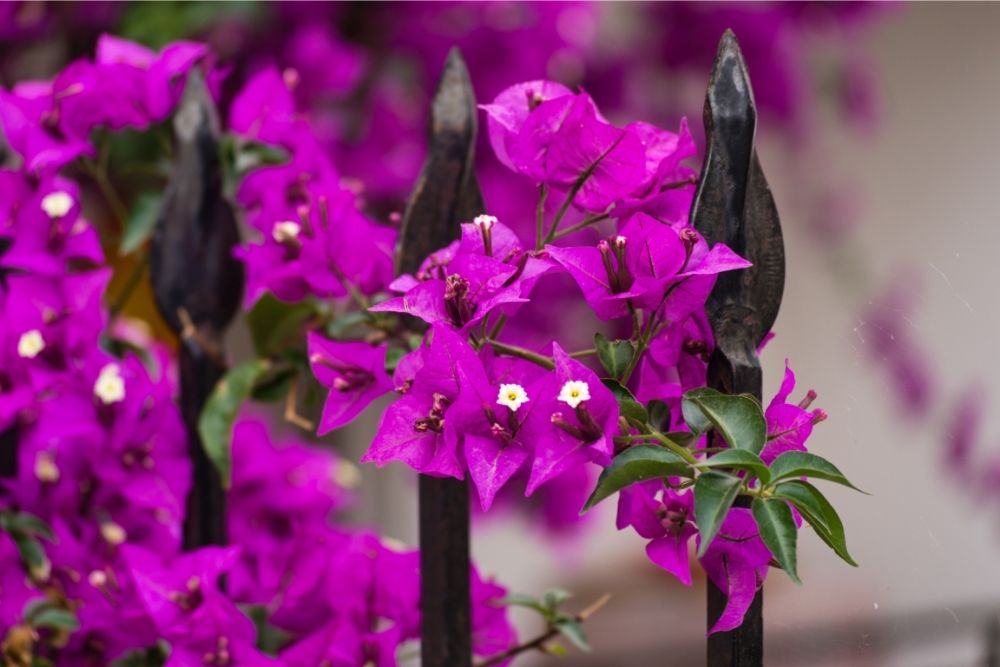
The beautiful scenery in Greece in part is thanks to the wonderfully vibrant native flowers Greece has. In fact, the flowers in Greece are so impressive that many people strive to create a Greek garden at home.
A Greek garden is the definition of the perfect garden. Many gardens worldwide can actually trace their roots back to ancient Greece.
Greek flowers aren’t just for tourists though. They often symbolize Greek mythology. The flowers of ancient Greece were big influences behind the creation of a lot of Greece’s extensive mythology.
The Greek people have strong feelings towards certain flowers which is why we see so many beautifully designed gardens throughout the country.
If you’ve ever seen a Greek garden you’ve fallen in love with, then you have come to the right place. In this article, we will be looking at a variety of wonderful traditional Greek flowers that you can incorporate into your own garden, giving your home a more Mediterranean feel.
1. The Violet
We start our list with one of Greece’s national flowers. The violet was once the symbolic flower of Ancient Athens. The reason for this is not only a result of the flowers’ strong color. In Greek, the violet is known as “ion”.
Ion also happens to be the name of the legendary figure who founded Athens. Therefore violets symbolize Athens herself. Athens is actually known as the “city of the violet crown” as a result of this delicate flower.
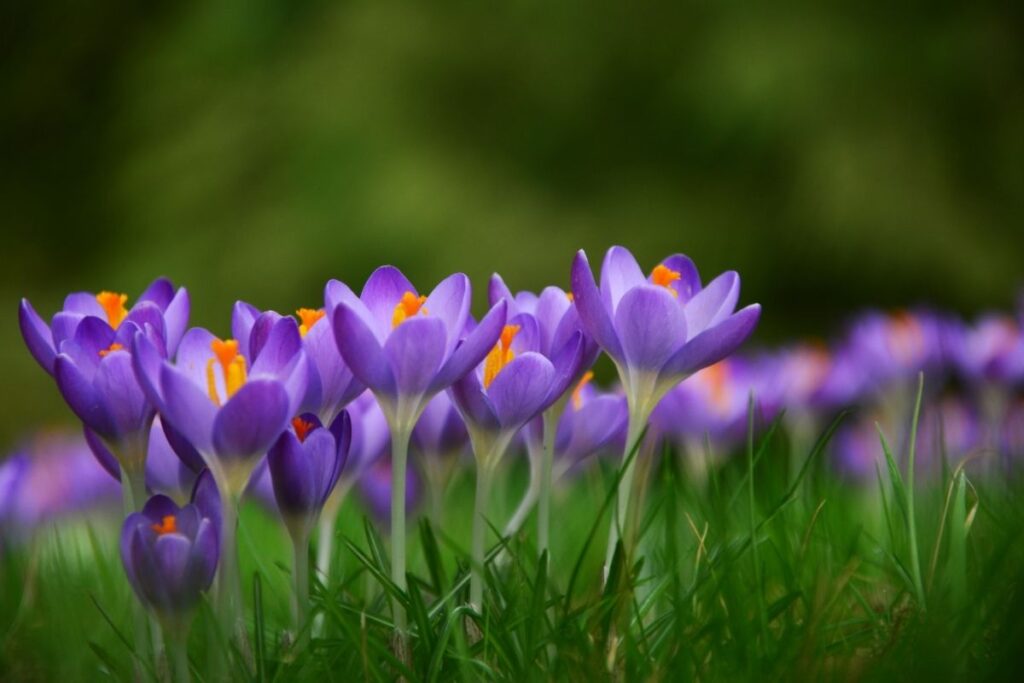
2. Bear’s Breech
Bear’s Breech is another flower considered to be the national flower of Greece. This Greek flower is known by a number of different names around the world. You may know this plant by the name Oyster Plant or Bear’s Foot.
Its scientific name is Acanthus Mollis. In Greek, the name Akanthos is used to describe Bear’s Breech. The lush green leaves and the tall stem help form the iconic, distinctive pattern we see throughout Greece. This flower is also depicted in famous Corinthian Style columns.
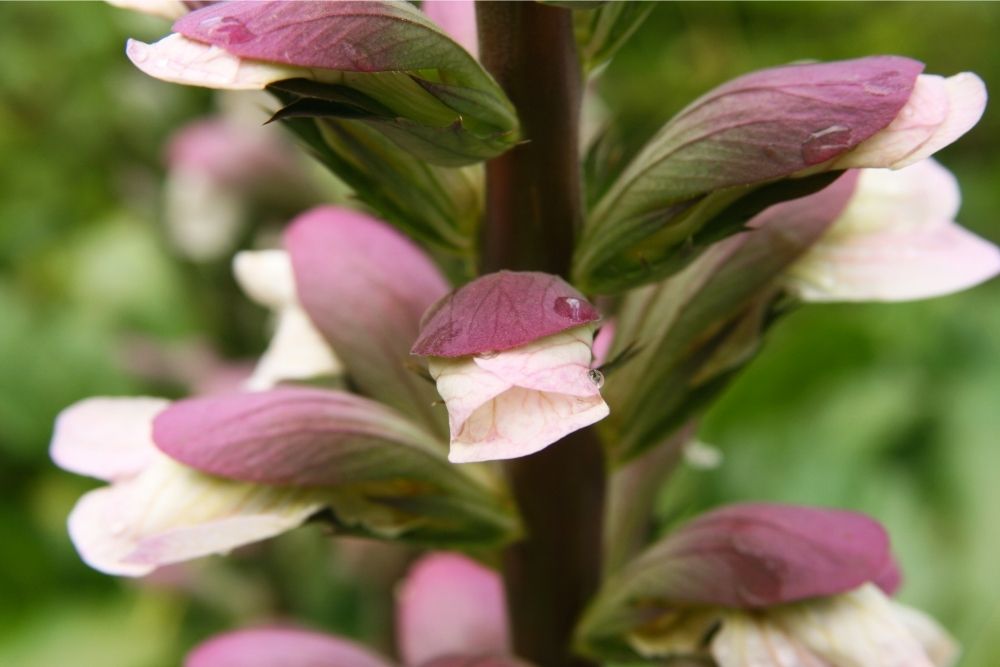
3. Hyacinth
The Hyacinth is a bulb flower that has fragrant blooms that blossom in thick clusters. The bell-shaped flower comes in a range of colors. These include shades of yellow, red, pink, white, lavender, blue, and purple.
The hyacinth plays an important role in Greek mythology. It is believed that the flower was formed from the blood of a man killed by a discus. If you decide to plant a hyacinth plant you can expect to see blooms with blue-violet flowers in late April.
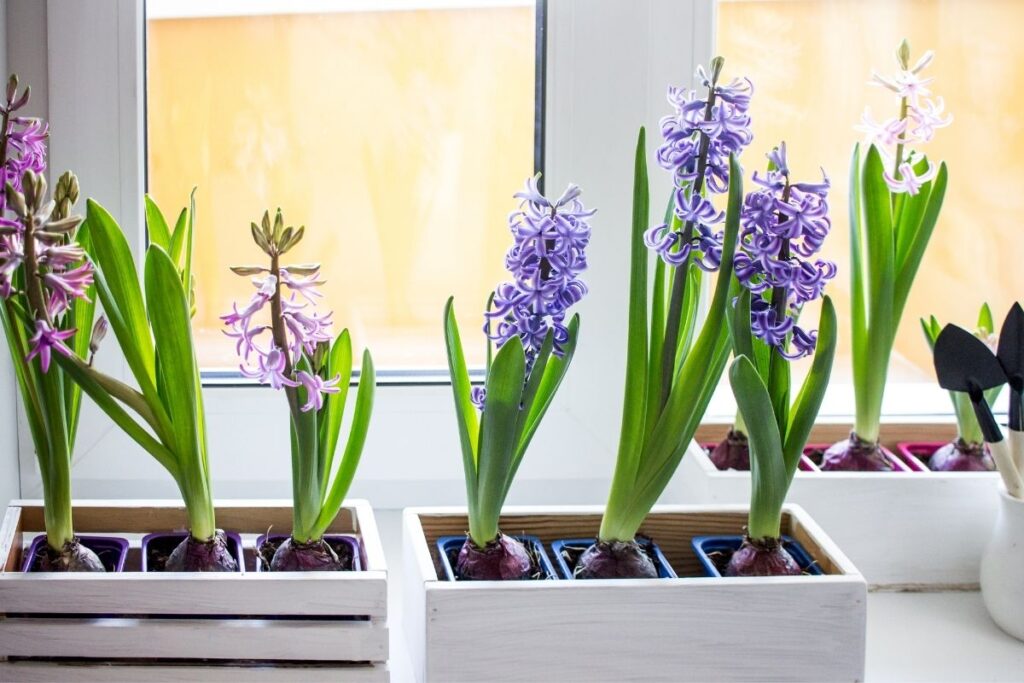
RELATED: Harmonious And Sweet: 11 Different Types Of Hyacinths
4. Gladiolus
The ancient Greek name for gladiolus is xiphium which means sword. This is in reference to the plant’s tall spikes that host a range of vibrant, refreshing blooms. The gladiolus is often thought to be a bulb plant, but it is actually a corm.
Corms are short and thick sections of the stem that form the base part of the plant, containing buds. These gorgeous flowers can take an attractive bouquet of flowers to the next level. When using the flowers in a bouquet consider cutting the spikes in the morning.
This will help avoid the heat of the day. Cuttings should only have one or two open flowers. This will allow unopened buds to bloom in the vase.
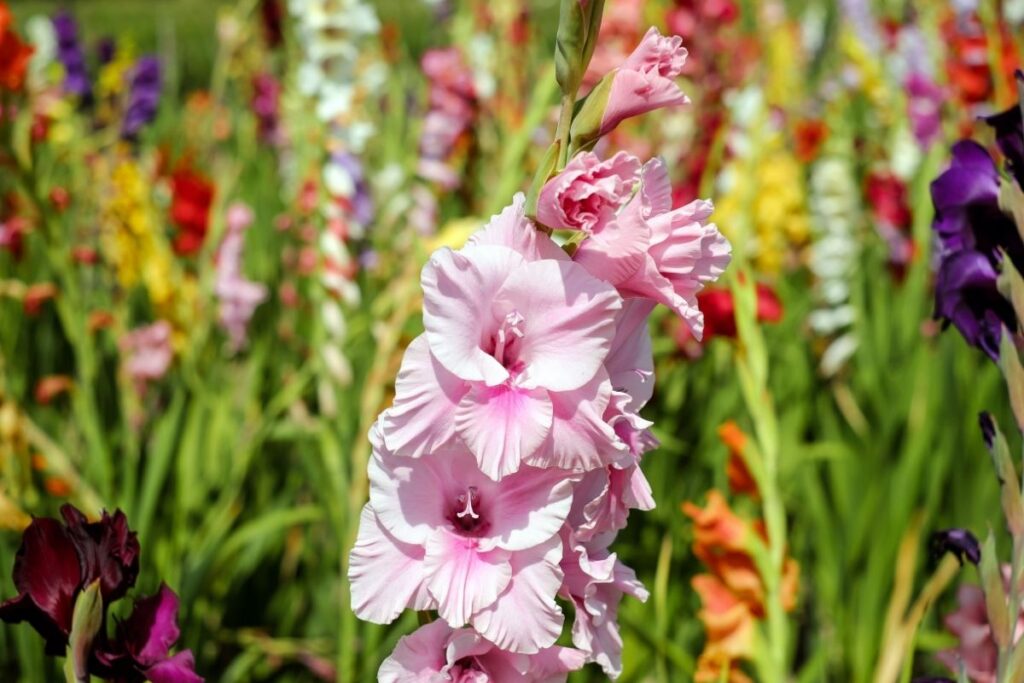
5. Daffodil
Daffodils have a strong association with Greek mythology. The Daffodil was considered to be the symbol of death, with many believing Hades has an association with the flower. This seems pretty strange when you consider the unassuming pleasant appearance of this hugely popular flower.
Used commonly as an Easter decoration in other cultures this attractive flower is one of the first to bloom in spring. Its trumpet shape protrudes from a star-shaped background and has a color of white and yellow.
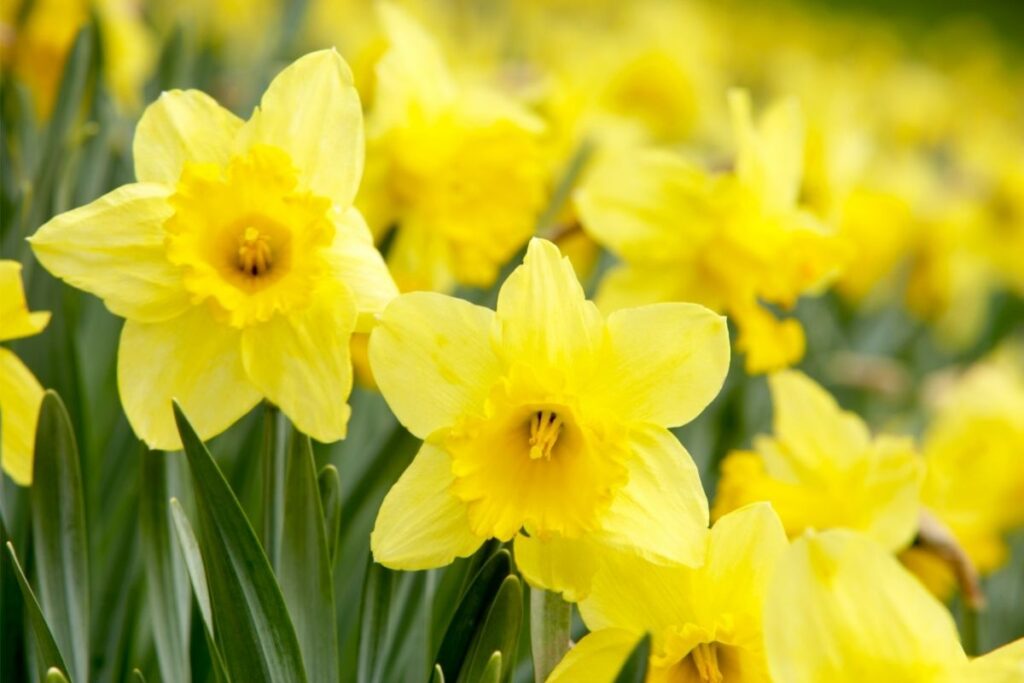
6. Anemone
The anemone flower is arguably the most beautiful flower on this list. Blooming in shades of red, white, blue, and purple the anemone flowers look stunning in any Greek garden. Blooming for up to 10 weeks you can expect the flower to bring life and vibrance to your garden.
Associated with the death of Adonis the Anemone is a traditional Greek flower that features in important Greek mythology. It is believed that as Adonis’ blood droplets touched the ground red anemones grew.
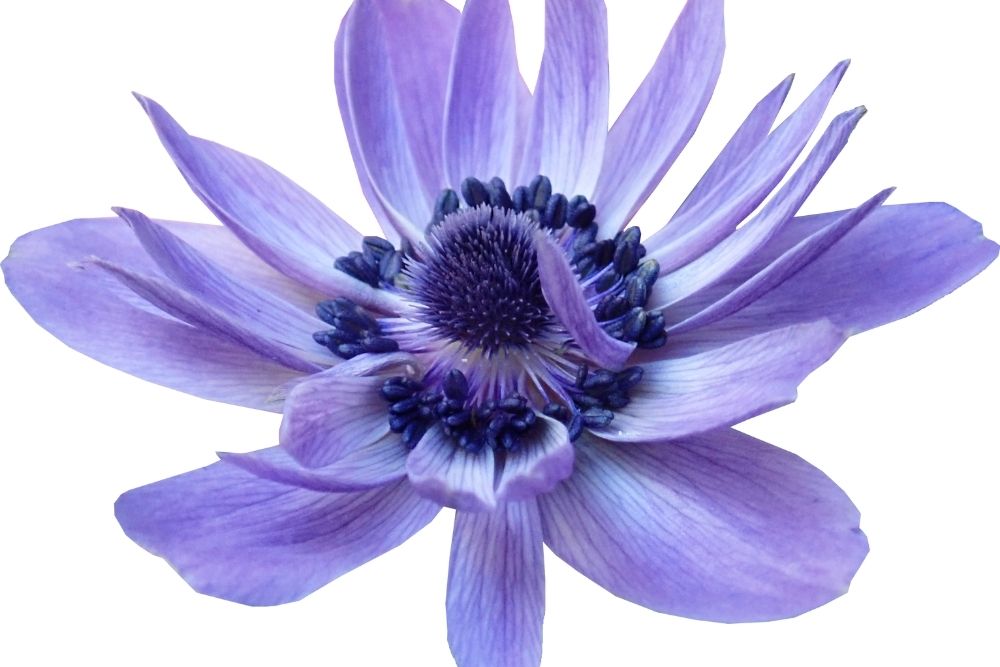
7. Christmas Rose
Unlike the other flowers on this list so far the Christmas Rose blooms in winter, hence its name Christmas Rose. Also known as hellebore this flower is beautifully subtle, adding a classy touch to a Greek garden.
This is also a popular plant in many Greek gardens because it doesn’t require much care. All you need to do is water the flower. If you want to avoid a bare garden this winter be sure to plant some Christmas Rose.
In Greece, they are also known to cure gout, paralysis, and insanity.
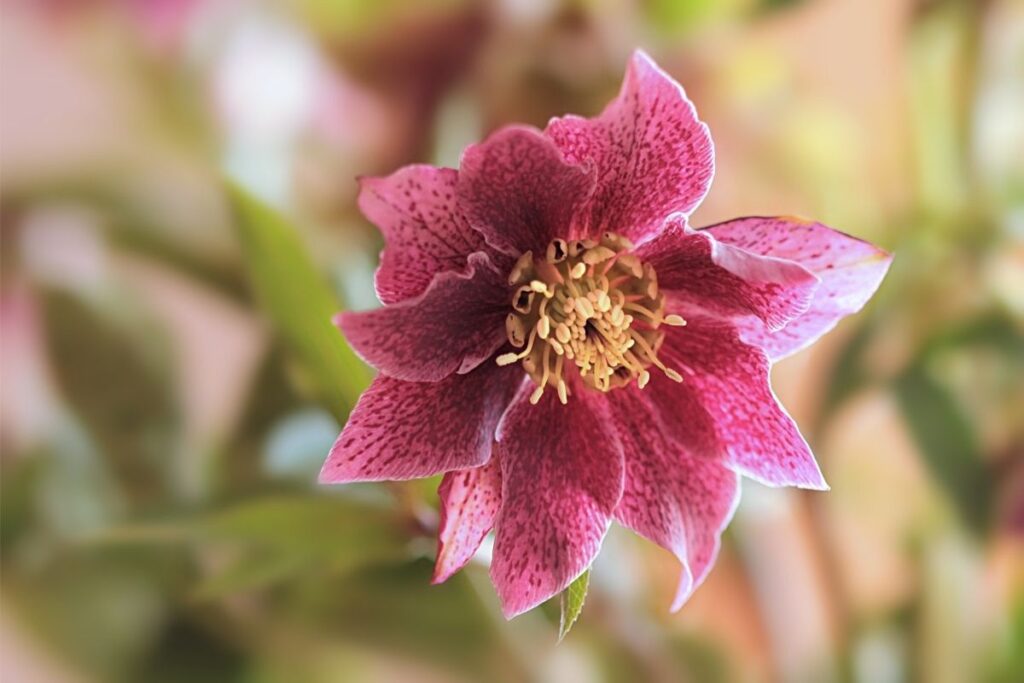
8. Lilies
Lilies come in a variety of shades but the most common are white and pink. True lilies are erect perennial plants with unique leafy stems.
They usually have narrow leaves and clustered flowers that portray purity, love, and devotion. The innocent beauty of the flower with its divine smell has ensured the plant is still the symbol of new life and rebirth.
They play an important role in Greek mythology. They are in connection with Zeus, Hera, and the birth of Hercules. In Greece, people believed that Hera’s breast milk touched the earth, and lilies growing where it fell.
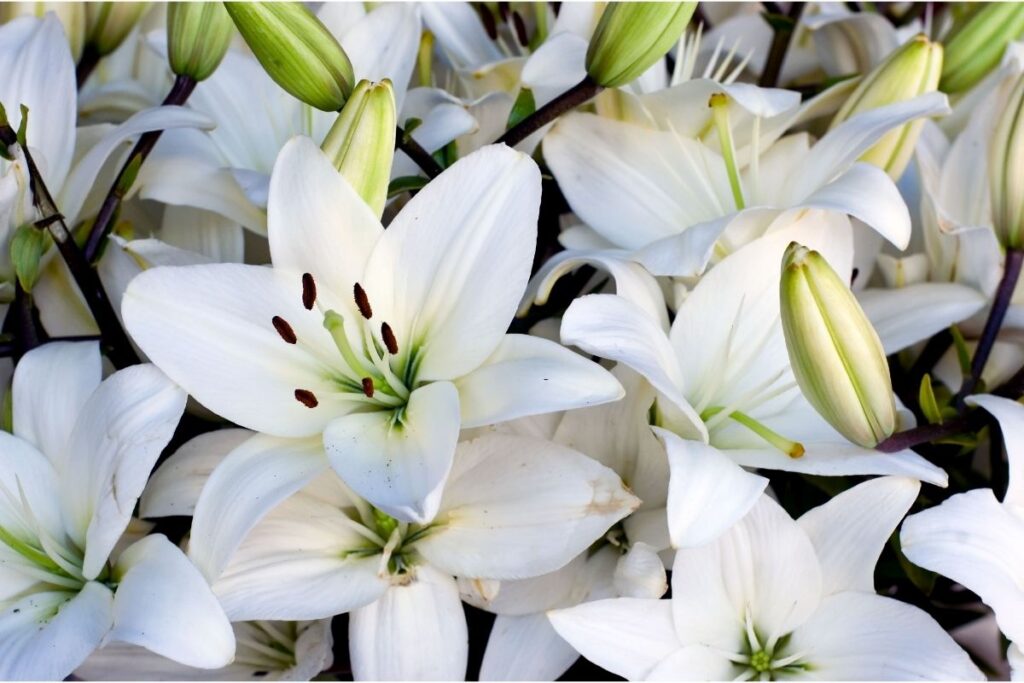
9. Aster
As you can probably tell from its name this flower gets its name from the star. The flower blooms in red, white, purple, pink, and blue. They aren’t that unfamiliar to a daisy with an iconic star-shaped appearance and a bright yellow center.
This versatile flower is a strong choice in many Greek gardens thanks to how easy it is to maintain and its ability to grow brilliantly in the sun and in the shade. These small, dainty daisy-like flowers are a good choice for you if you want to easily bring a bit of the Mediterranean to your backyard.
The most common myth in Greece regarding the Aster is its link to Astraea, the Goddess of innocence, purity, and justice.
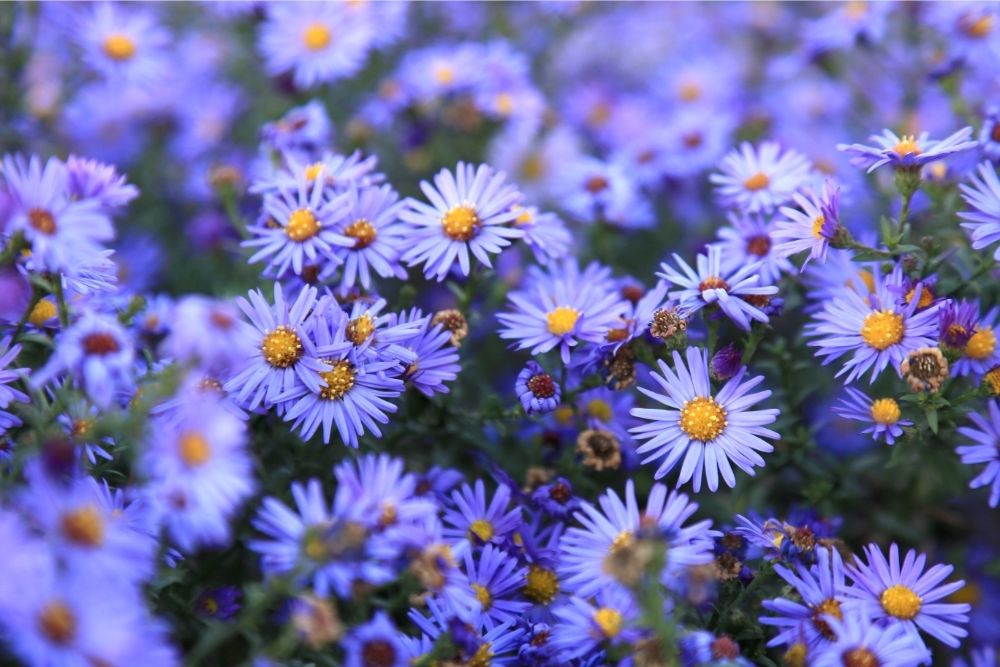
10. Iris
The Iris flower is well-known around the world but it is the Greeks that gave it its name we all know today. Iris is the Greek god of color and rainbow.
According to Greek mythology, Iris would use the rainbow as a bridge between earth and heaven. The recognizable purple, pink, yellow, blue, and red flowers make a lovely addition to any garden.
If you want to grow this uniquely shaped flower be sure to plant the Iris in a sunny spot as they require at least 6 hours of sunlight a day to grow. To thrive they also need a decent amount of space so don’t plant them too close together.
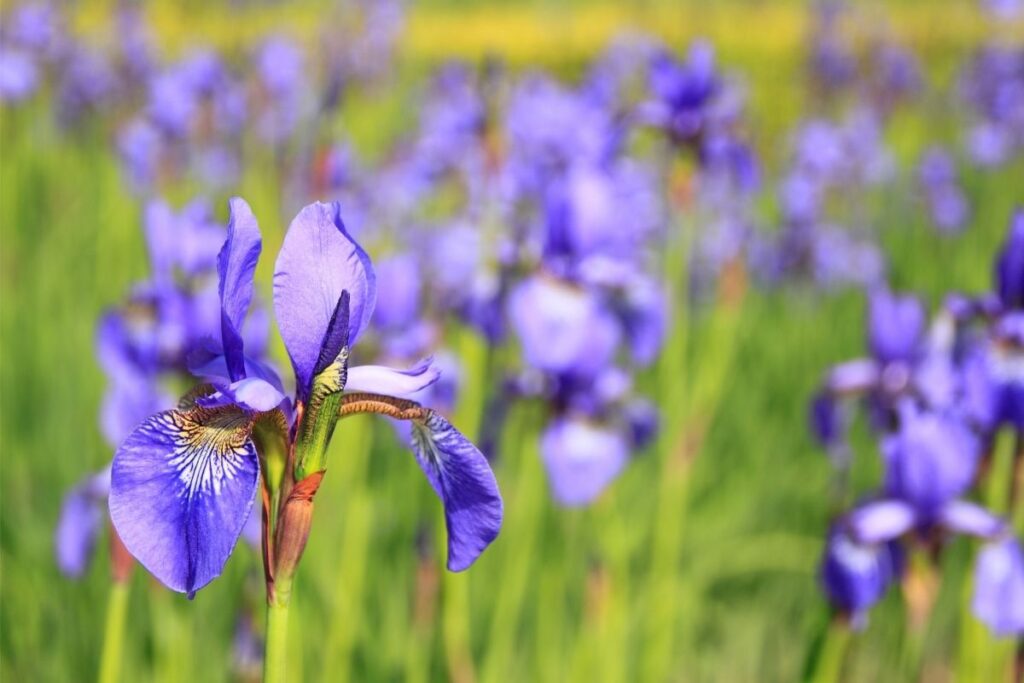
RELATED: Intriguing And Radiant: 7 Different Types Of Irises
11. Dianthus
The Dianthus flower is a carnation. Their uses in the garden are nearly endless. They make a great border display and look fantastic in a hanging basket. In Greece, they are to decorate the home and are frequently in use for floral arrangements.
With a strong pink color, it’s not hard to see why this flower has grown massively in popularity around the world. They can range from tiny groundcovers to 30-inch tall cut flowers.
Again we have Greek culture to thank for the name of this flower. Dianthus gets its name from the Greek words “dios” and “anthos”. Dios means god and anthos is the word given to flowers.
The flower symbolizes love, admiration, and affection which is why it is usually given to someone in a floral arrangement.
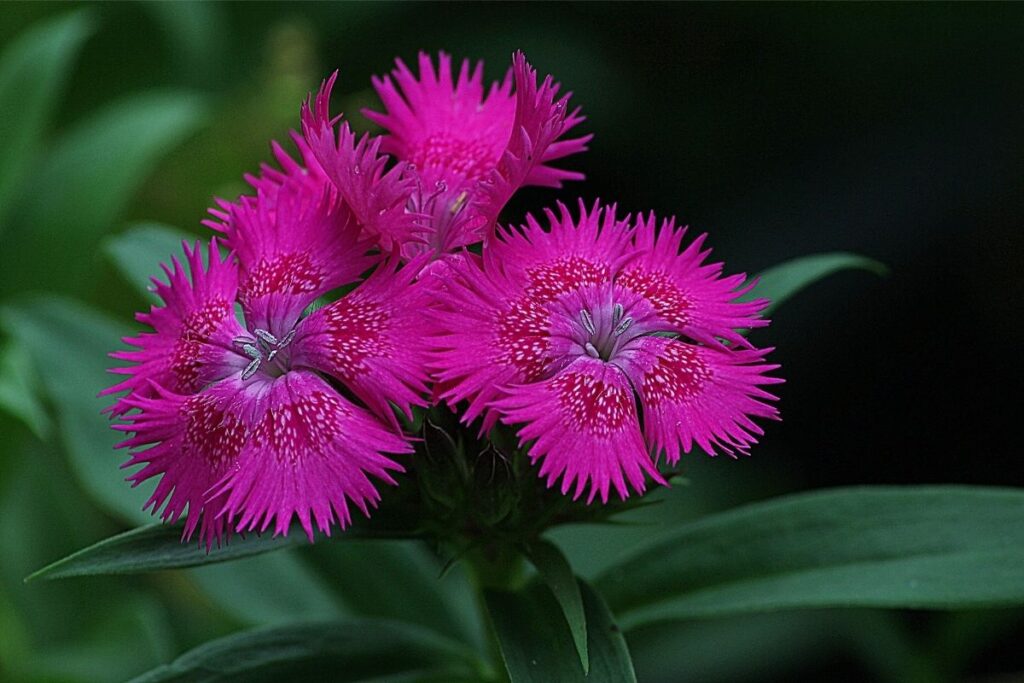
12. Rose
As we all know well enough a rose is the best flower to use if we want to symbolize strong love and passion toward somebody. It is ancient Greece we once again have to thank for this powerful flower.
Aphrodite the goddess of love is credited with the creation of the rose from her tears when grieving the loss of Adonis. Throughout the years the flower has been in use by poets, authors, and artists as a metaphor for beauty, passion, and underlying love.
Perfect for a romantic gesture, a valentines day gift, or included in the most lavish wedding bouquets the rose will add fiery passion to your garden.

13. Larkspur
Similar to a Delphinium flower the Larkspur is a beautifully charming cluster of blue flowers that sit at the top of a long stem. Larkspur is ‘the knight’s spur’ because of its history in Greek mythology.
The larkspur flowers came from the blood of Ajax, who killed himself after not being able to protect Achilles. The flower has been at home in most Greek gardens for thousands of years. Today it is typically arranged with blooms of other flowers for a wild and rustic floral theme.
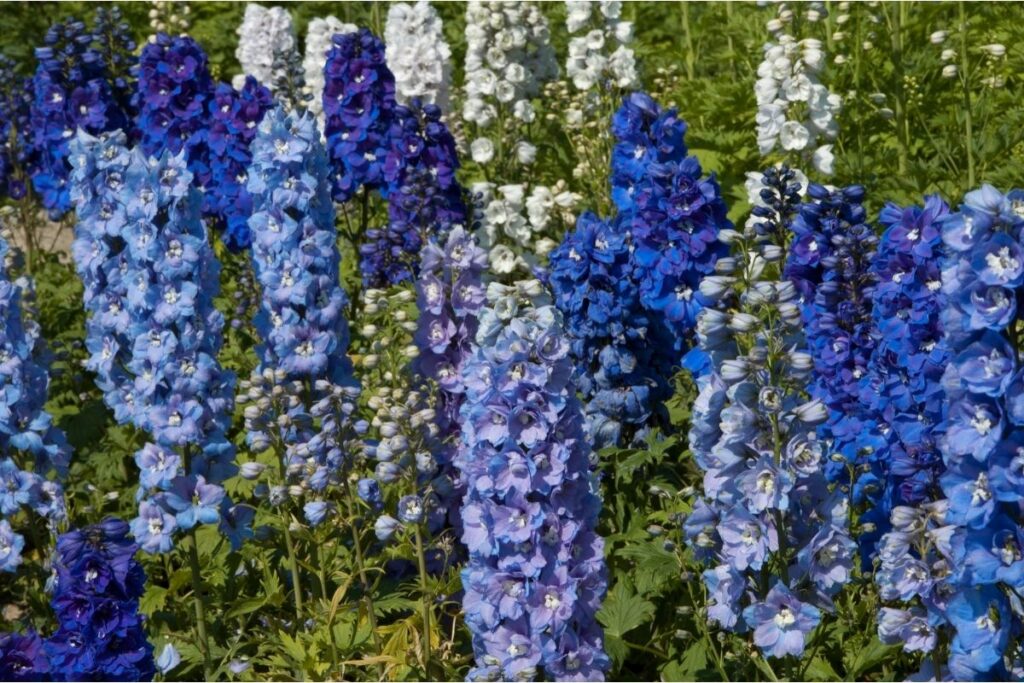
Final Thoughts
Greece has an abundance of flowers, most of which are the finest in the world. Almost every flower in Greece and fact around the world has a history that has a relation to Greek mythology whether it simply be how it’s named or an interesting story as to how they were produced.
Flowers in Greece aren’t just for decoration. They provide strong emotions and beliefs that give people the chance to express feelings and passion.
Many of the plants we have included in our list can grow all year round in lots of different climates, giving you the chance to add them to your garden.
Including any of the flowers on this list is likely to give your garden that Greek feel, whether it be through vibrancy and beauty or passionate emotions with a Mediterranean fragrance, so be sure to try some out.
Editor’s Recommendations
10 Perfect Pear Flowers (With Pictures)







